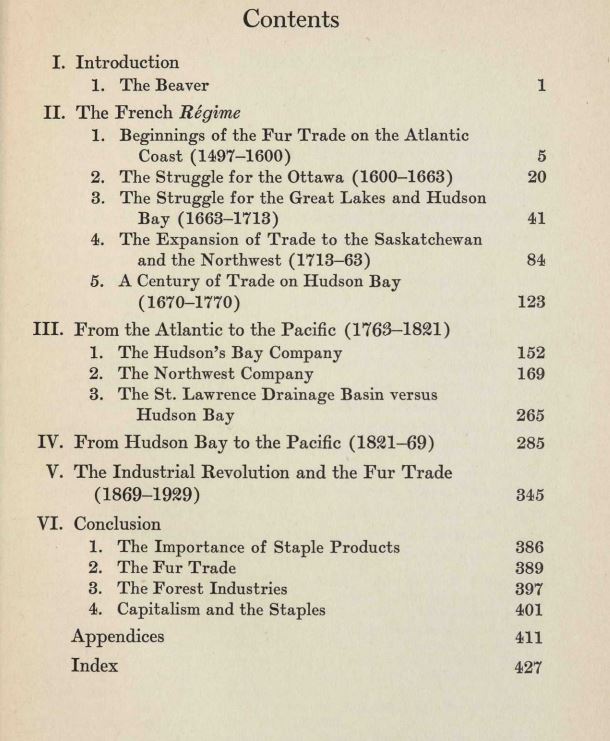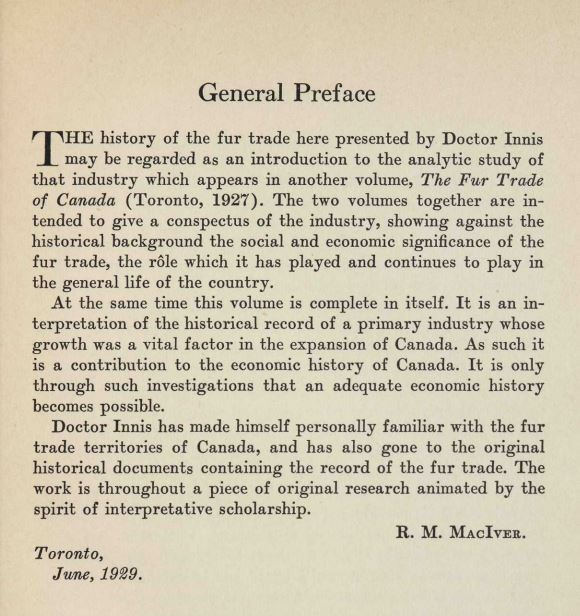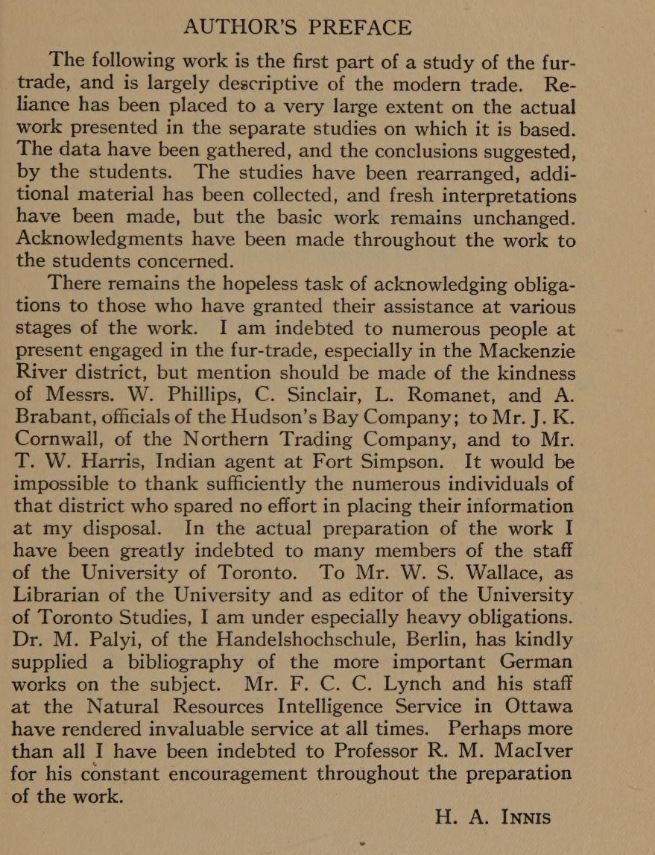Harold Innis’ Fur Trade first appeared in 1927. It was printed by OUP (Canadian Branch) for the University of Toronto Library and had 172 pages:
 Three years later, a second enlarged volume with 444 pages and a slightly different title (in Canada rather than of Canada) was issued by Yale University Press in the US and OUP in England:
Three years later, a second enlarged volume with 444 pages and a slightly different title (in Canada rather than of Canada) was issued by Yale University Press in the US and OUP in England:
The preface to the 1930 Fur Trade by R.M. MacIver1 clarifies that the second volume was not simply an enlarged version of the 1927 edition (as is often reported). Instead, as MacIver writes:
The history of the fur trade here presented by Doctor Innis may be regarded as an introduction to the analytic study of that [contemporary] industry which appears in another volume, The Fur Trade of Canada (Toronto, 1927). The two volumes together are intended to give a conspectus of the industry, showing against the historical background the social and economic significance of the fur trade, the [historical] role which it has played and continues [contemporarily] to play in the general life of the country.
MacIver contributed a ‘General Preface’ also to the 1927 volume in which the same point is made:
The present study does not deal with the historical development of the industry. The history of the fur-trade, which has an important bearing on the whole process of settlement and exploitation of the Canadian West, is the subject of a separate work which Dr. Innis has prepared, and which will be published in due course.
And here is Innis himself in his own ‘author’s preface’ to the 1927 volume:
The following work is the first part of a study of the fur-trade, and is largely descriptive of the modern trade.
Innis then ends that preface, having addressed “the hopeless task of acknowledging obligations to those who have granted their assistance at various stages of the work”, as follows:
Perhaps more than all I have been indebted to Professor R. M. Maclver for his constant encouragement throughout the preparation of the work.
- Wiki: Robert Morrison MacIver (1882-1970) received degrees from the University of Oxford (B.A. 1907) and the University of Edinburgh (M.A. 1903, D.Ph. 1915). He was a university Lecturer in Political Science (1907) and sociology (1911) at the University of Aberdeen. He left Aberdeen in 1915 for a post at the University of Toronto where he was Professor of Political Economics and later Head of Department from 1922 to 1927. In 1927 he accepted an invitation from Barnard College of Columbia University in New York City, where he became Professor of Social Science from 1927 to 1936. He was subsequently named Lieber Professor of Political Science and Sociology at Columbia University and taught there from 1929 to 1950. (From the 1929 date and Toronto location of his Preface to Innis’ 1930 Fur Trade, it would appear MacIver taught at both Toronto and Columbia in 1927-29.) He was President, beginning in 1963, and then Chancellor of The New School for Social Research (1965–66). MacIver was Vice-Chairman of the Canada War Labor Board from 1917 to 1918. He was a Fellow of the Royal Society of Canada, the American Academy of Arts and Sciences, and the American Philosophical Society. He was a member of the American Sociological Society, and was elected as its 30th President in 1940. ↩




